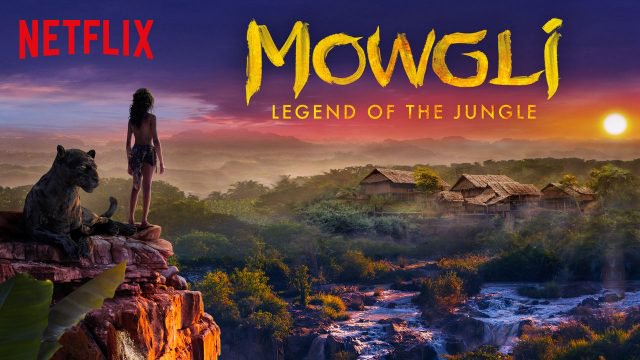REVIEW: ‘Mowgli: Legend of the Jungle’ lacks the bare necessities to live up to its predecessors
The film severely failed at combining themes of tenderness with brutal visuals.
It isn’t too often when one might have high hopes for a Netflix Original film, but the wasted potential of “Mowgli: Legend of the Jungle,” premiered Friday Dec. 7, makes it an especially painful disappointment.
The directorial debut of Andy Serkis — who himself plays the role of Baloo the bear in the film — follows author Rudyard Kipling’s adventurous story of Mowgli, a young boy raised by the jungle and its many creatures. If the tale sounds all too familiar, that’s because it has been done before. Twice in fact.
While it is a stand-alone film, “Mowgli: Legend of the Jungle” follows two wildly popular cinematic adaptations of the children’s book, one of them being the animated version released in 1967, and the other being 2016’s “The Jungle Book.” Forced to distinguish his film from its predecessors, Serkis makes a valiant attempt at creating a truly ambitious and unique viewer experience, yet messes up in almost every way.
Contrasting with the Oscar-winning CGI of “The Jungle Book,” “Mowgli: Legend of the Jungle” simply fails in the special effects department. As an actor for fan-favorite characters like Gollum in the Lord of the Rings trilogy, or Caesar in “Planet of the Apes,” any reasonable person would expect Serkis to use his experience working with motion-capture to ensure that the jungle’s beasts are absolutely stunning. What the audience receives, however, is an abundance of digital fur with human expressions grafted on.
Admittedly, some of film’s discrepancies in quality can be attributed to the fact that it operates on a relatively low budget for a blockbuster (only $100 million), that is also nearly half that of 2016’s iteration ($177 million). Still, “Mowgli: Legend of the Jungle” blunders on the one part of its production which is absolutely essential when illustrating a narrative that is supposed to be as mythical and captivating as “The Jungle Book.”
Additionally, the effort of Andy Serkis to change the traditionally family-friendly story of Mowgli to a gritty thriller about the character’s humanity awkwardly leaves the movie feeling somewhere in between. Throughout the film’s runtime, there is a strong presence of violent hunting and death. Blood shows up on the screen often, and this incredible bleakness is in direct opposition to the themes of family and belonging, which are also prominent in “Mowgli: Legend of the Jungle.”
Not mature enough for an older viewer to watch without feeling silly and too dark for children, the film finds itself in a peculiar position that has no real audience.
Mowgli’s saving grace would have to be the film’s voice performances from its star-studded cast of actors, including Benedict Cumberbatch, Cate Blanchett and even Christian Bale. In particular, Cumberbatch’s role as Shere Khan, the film’s villainous Bengal tiger, is menacing and at times even chilling. These attempts at redemption, however, are weighed down by poor motion-capture which is ultimately the most deciding factor for the characters’ portrayals. Simply put, seeing the face of Bale on a panther is the most terrifying part of the jungle.
Struggling to create an identity for itself, “Mowgli: Legend of the Jungle” unsuccessfully attempts to blend brutality with elements of tenderness, all while failing in its most important technical aspects.


